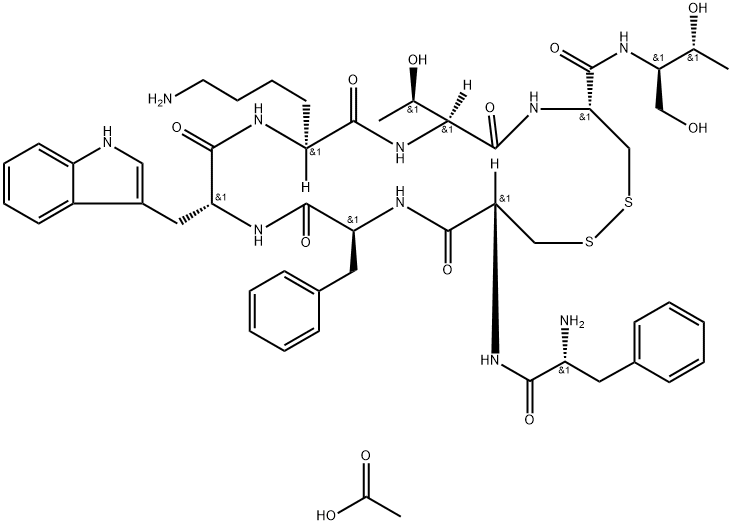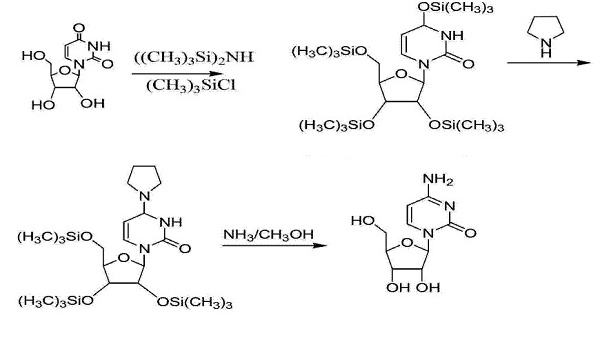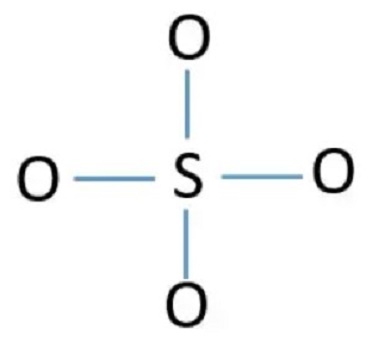The uses and biological function of Octreotide
Description
Octreotide is an octapeptide that mimics natural somatostatin pharmacologically. It is a synthetic somatostatin analog with several palliative care indications, including managing ascites, bowel obstruction, diarrhoea, fistulae, and tumor secretions[1].
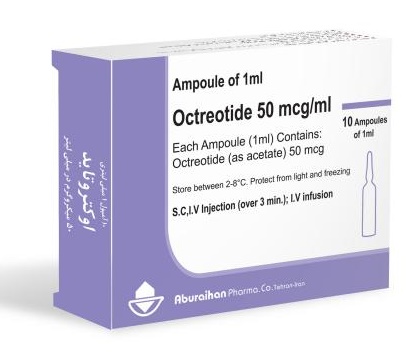
Biological function
As a synthetic polypeptide similar to somatostatin in structure and pharmacological function, like somatostatin, octreotide suppresses the secretion of growth hormone and thyrotropin from the anterior pituitary gland, in addition to decreasing the release of certain pancreatic islet cell hormones such as insulin, glucagon, and vasoactive peptide (VIP). Octreotide has additional functions: it inhibits the release of growth hormone, glucagon, and insulin. It decreases pancreatic, biliary, and intestinal secretions, inhibits gall bladder contraction and gastrointestinal motility, reduces splanchnic blood flow, and alters water, nutrients, and electrolyte absorption from the GI tract. By these actions, octreotide can reduce portal pressure, fat absorption, and lymphatic flow in the thoracic duct[2-3].
Uses
Octreotide is seen in GI and endocrine system disorders. One of the primary uses of octreotide is treating and managing carcinoid tumors. For adults it is approved for use in adults for the management of acromegaly, carcinoid tumor, and vasoactive intestinal peptide tumor. For neonates, it has been successfully used off-label for the management of congenital chylothorax, chylous ascites, pericardial effusion, congenital lymphoedema, lymphangiectasia, gastrointestinal bleeding, congenital hyperinsulinism, and enterocutaneous fistula. Octreotide suppresses severe diarrhea/flushing associated with carcinoid tumors and prevents potentially life-threatening hypotension in a carcinoid crisis. Additionally, octreotide can be used to manage watery diarrhea in VIP-secreting tumors, and it can reduce growth hormone and insulin-like growth factor concentrations in patients with acromegaly[4].
References
[1] Syed Ahmed Zaki, Atul Malhotra, Mohan B Krishnamurthy. "Octreotide Use in Neonates: A Case Series." Drugs in Research & Development 18 3 (2018): 191–198.
[2] A. McMahon. "Octreotide use and safety in infants with hyperinsulinism." Pharmacoepidemiology and Drug Safety 26 1 (2017): 26–31.
[3] A. McMahon. "Octreotide use and safety in infants with hyperinsulinism." Pharmacoepidemiology and Drug Safety 26 1 (2017): 26–31.
[4] Sarah M. Wonn MD . "A prospective study of carcinoid crisis with no perioperative octreotide." Surgery 171 1 (2022): Pages 88-93.
);You may like
See also
Lastest Price from Octreotide manufacturers
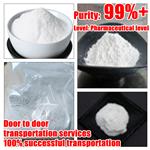
US $1.00/g2024-05-04
- CAS:
- 79517-01-4
- Min. Order:
- 1g
- Purity:
- 99%
- Supply Ability:
- 100kg
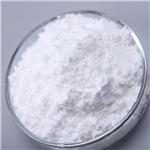
US $0.00-0.00/Gram2024-05-01
- CAS:
- 79517-01-4
- Min. Order:
- 1Gram
- Purity:
- 98%
- Supply Ability:
- 50KG
